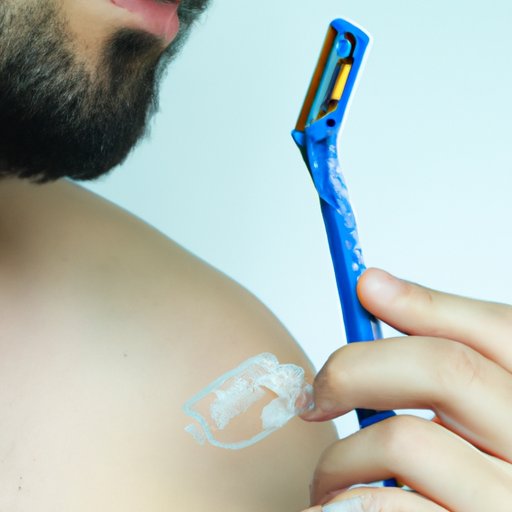Introduction
Razor burn is a common skin irritation that can occur after shaving. It is typically characterized by redness, itching, stinging, burning, or bumps in the area where the razor blade was used. Razor burn can be uncomfortable and unsightly, and it’s important to understand what causes it in order to prevent it from occurring.
Identifying the Causes of Razor Burn
Razor burn can be caused by a variety of factors, including dull razor blades, improper shaving techniques, and poor hygiene habits. Dull razor blades can pull at the skin and cause irritation, while improper shaving techniques such as using too much pressure or going against the grain of the hair can also result in razor burn. Poor hygiene habits such as not cleaning the razor blade regularly can also lead to razor burn, as bacteria can accumulate on the blade and cause skin irritation.
Exploring Common Risk Factors for Razor Burn
Certain factors can increase your risk of experiencing razor burn. People with sensitive skin are more likely to experience razor burn, as their skin is more prone to irritation. Those with thick or curly hair may also be more susceptible to razor burn, as thicker hairs can be more difficult to cut and may require more passes of the razor blade. Additionally, those who shave too often may be more likely to experience razor burn, as frequent shaving can irritate the skin.

Investigating Ways to Avoid Razor Burn
The best way to avoid razor burn is to take precautions when shaving. You should always prepare the skin before shaving by washing it with warm water and using a moisturizer or shaving cream. When using a razor blade, make sure to use one that is sharp and clean. Additionally, you should take extra care when shaving sensitive areas, such as the face or bikini line. Shave in the direction of the hair growth, and use short, gentle strokes.

Examining Different Treatments for Razor Burn
If you do experience razor burn, there are a few treatments that may help. Applying a cold compress to the affected area can help reduce inflammation and soothe the skin. Aloe vera gel or other moisturizers can also be applied to the skin to help soothe irritation. If the razor burn is severe, anti-inflammatory medications may be recommended.

Understanding the Link Between Razor Burn and Skin Irritation
Razor burn can lead to skin irritation and even infection if not treated properly. Bacteria can accumulate on the razor blade and cause skin irritation, which in turn can lead to infection. To prevent this, it is important to clean the razor blade after each use and to take extra care when shaving sensitive areas.
Conclusion
Razor burn is a common skin irritation that can be caused by dull razor blades, improper shaving techniques, and poor hygiene habits. Those with sensitive skin, thick or curly hair, or who shave too often are more likely to experience razor burn. To avoid razor burn, it is important to prepare the skin before shaving, use a sharp and clean razor blade, and take extra care when shaving sensitive areas. If you do experience razor burn, treatments such as cold compresses, aloe vera gel, and anti-inflammatory medications may help. Furthermore, it is important to understand the link between razor burn and skin irritation, as bacteria can accumulate on the razor blade and cause skin irritation and even infection.


